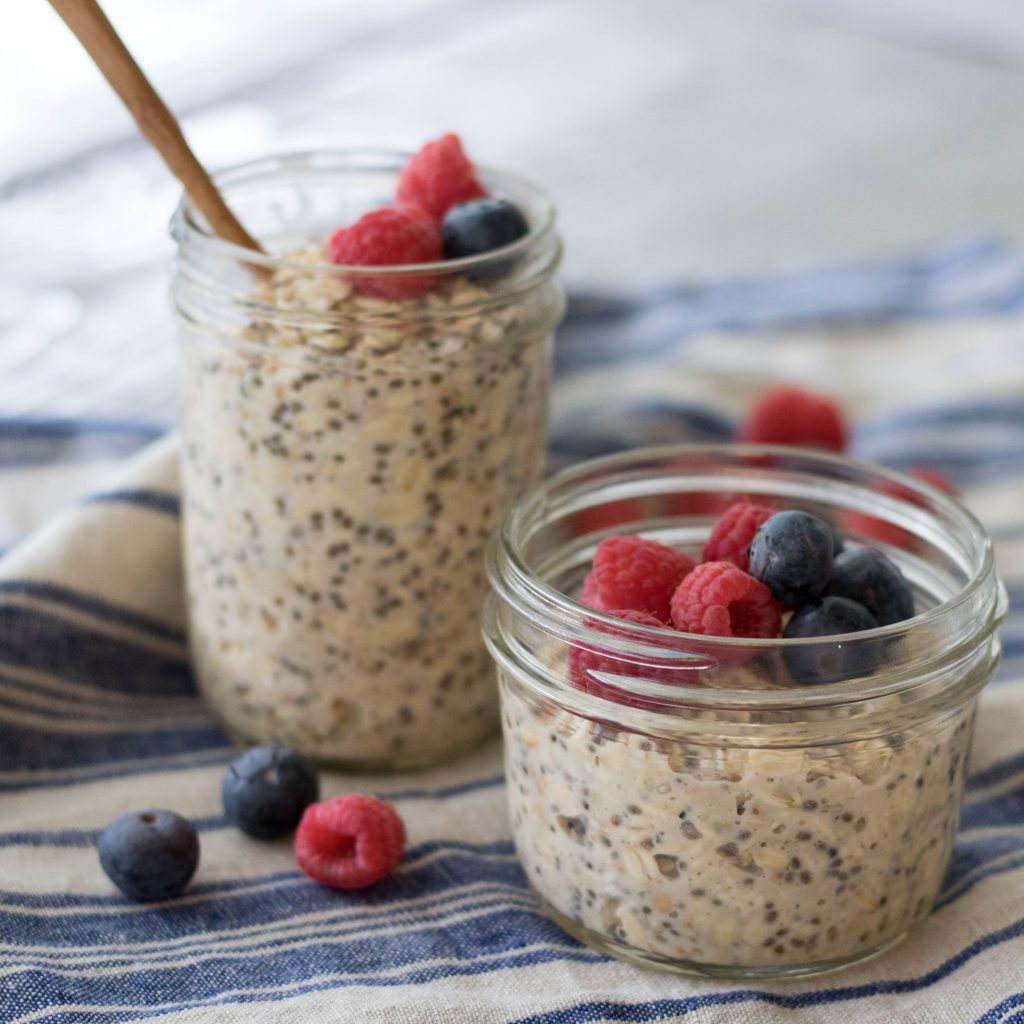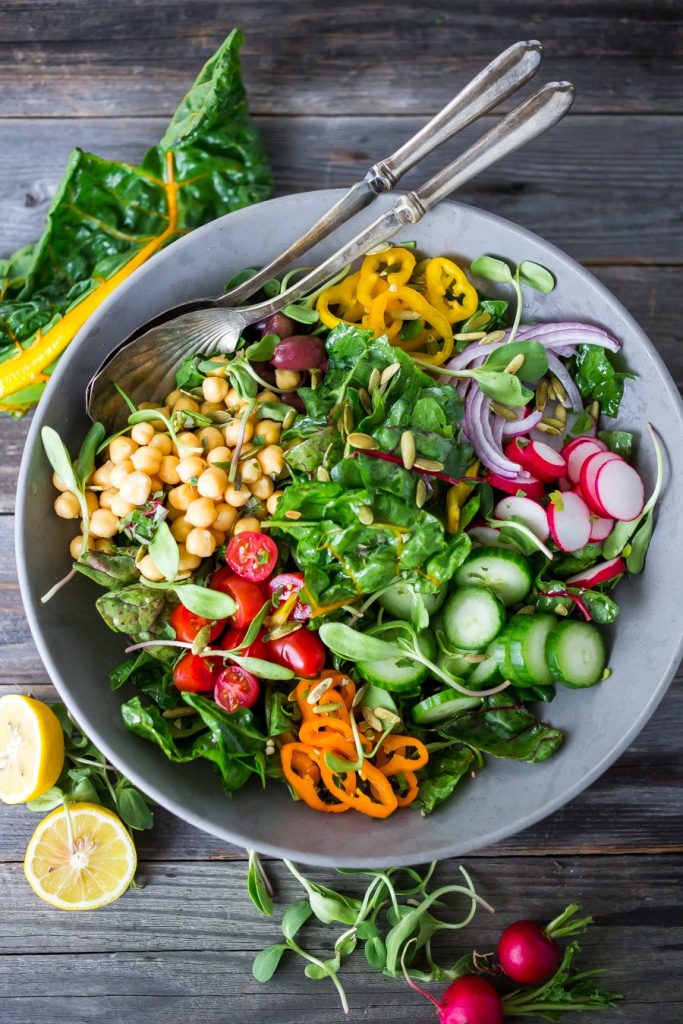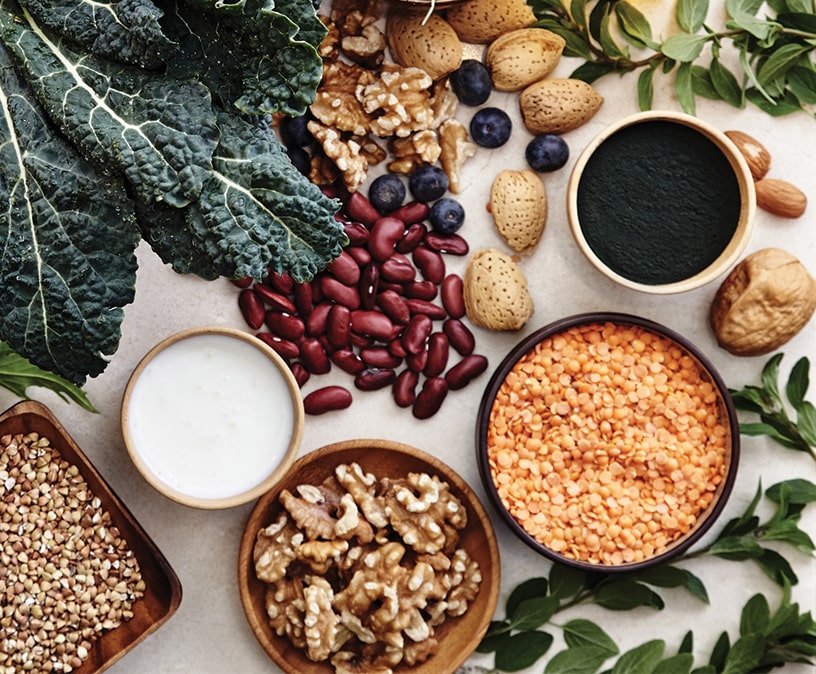Pulses, the dry edible seeds of plants in the legume family, include beans, peas, lentils, and chickpeas.

Pulses support a sustainable and diverse agriculture system, use minimal water to grow, have a low carbon footprint when used in cropping rotations, and help to reduce food waste. They are a nutrient-dense source of protein and contribute to food security and human nutrition across the globe.
Whether you’re hoping to adopt a climate-friendly diet, support sustainable agriculture, or add pulses to your products, these ingredients are an optimum choice for supporting the health of your body and the planet.
The Sustainability of Pulse Crops
Pulses Play an Important Role in Sustainable Agriculture
Experts predict that the global population will increase from 7.3 to 9.8 billion people by 2050, potentially increasing food demand by as much as 59-98% (Valin 2013). Research suggests that shifting to more plant-forward dietary patterns may contribute to a more sustainable food system. Dietary patterns higher in plant-based foods like fruits, vegetables, whole grains, nuts, seeds, and pulses not only promote health, but are also associated with lower environmental impact by way of less greenhouse gas emissions, land usage, and water usage compared to the typical United States diet (Nelson 2016; Harwatt 2017).
Pulses May Help Reduce Greenhouse Gas Emissions
Nitrogen is an essential nutrient for all plants, supporting structural development, metabolism, and the process of photosynthesis (Sulieman 2011). It also plays an important role in regulating water and nutrient uptake, ensuring a plant has enough energy to optimize production yield.
Pulses are unique from other crops because they have the ability to fix nitrogen in the soil. They do this with a symbiotic relationship with rhizobia bacteria. The bacteria form nodules on the roots of pulse plants, where they fix nitrogen gas into a more useful form of nitrogen. The plant is then able to utilize that nitrogen for growth and development. This not only reduces the pulse plant’s need for fertilizer, but it also improves the soil’s nitrogen content for future crop rotations, further reducing the need for synthetic fertilizers (Newton 2015). Therefore, by including pulse crops like dry peas in a crop rotation with wheat and oilseeds could decrease nitrous oxide emissions by nearly 20-25%. In addition, the large-scale use of pulses to minimize fertilizer requirements is linked to the reduction of carbon dioxide emissions that otherwise would have been generated with the use of synthetic fertilizer (Jeuffroy 2013). Overall, the inclusion of pulses in crop rotations can reduce greenhouse gas implications while still maintaining crop quality and growth productivity (MacWilliam 2018).
Pulses Can Improve Soil Diversity and Crop Productivity
Including pulses in crop systems not only improves greenhouse gas emissions, but also improves the soil diversity and quality, leading to an increase in future production. One study showed that when pulse harvests are followed by cereal crops, such as wheat or barley, it can lead to a 30% increase in grain production and a 50% improvement in protein yield (Gan 2015). Since the global demand for grains is increasing, utilizing pulses in these crop rotations can help improve grain yield while minimizing natural resource usage compared to cereal-only rotations.
Pulse crops can also reduce pest damage and weed growth (Robson 2002). This is because pulses are not typically suitable to the same pests or diseases as cereal crops, so using them in between cereal-based crop rotations can give the soil a chance to recover from any pests and diversify before the next cereal crop (Zander 2016).
Pulses Are Water Efficient Crops
Agriculture accounts for nearly 70% of total water use across the globe (FAO 2019). Demand for water resources is predicted to increase by 20-30% by 2050, making the long-term sustainable use of water a growing concern (Burek 2016).
Shifting to more plant-forward diets may help to reduce pressure on the global water resource demand. The water footprint per gram of protein for milk, eggs, and chicken is nearly 1.5 times higher than for pulses. And the water footprint per gram of protein for beef is about 6 times larger than for pulses. (Mekonnen 2010). In fact, studies have found that replacing half of all animal products with an equivalent amount of nutritious crops like pulses, vegetables, or nuts, could reduce the water footprint of food production by up to 30% (Mekonnen 2010).
How so? In addition to using water efficiently for their own growth and production, pulses can help improve the water efficiency of other crops. The ingredients have a unique rooting system that allows them to use shallow soil water for their own growth, while sparing the deeper soil water for other crops (Meena 2018). When used in crop rotation systems, pulses have been shown to help conserve water in the soil, thereby reducing irrigation requirements for future crops (Gan 2009; Gan 2015; Gan 2016; Ding 2018).
The water efficiency of pulses also makes them well-suited to grow in moderately drought prone regions or low moisture settings (Ding 2018). Certain pulses can be used in these dry settings for harvest or as a cover crop to protect the soil in between harvest crop rotations (Curtis 2021; Fatokun 2012; Muñoz-Amatriaín 2010).

Studies have found that replacing half of all animal products with an equivalent amount of nutritious crops like pulses, vegetables, or nuts could reduce the water footprint of food production by up to 30% (Mekonnen 2010).
Pulses Can Contribute to a Reduction in Food Waste
Pulses often require little processing and no refrigeration, which reduces their natural resource consumption near the end of the food supply chain. Most forms of pulses are shelf-stable and can be stored at room temperature for months or years, while still maintaining their nutritional value. Because of their long shelf-life, pulses can help alleviate consumer food waste compared to fresh fruits and vegetables. The contribution of pulses to the total global food waste footprint is relatively low, meaning they are an environmentally friendly source of important nutrients (FAO 2015).
Simple Ways to Add More Pulses to Your Diet

Swap a portion (1:1) of ground beef with lentils or black beans in your next batch of tacos.

Try plant-based or vegan meat substitutes, which often include pea protein, for Meatless Monday.

Try a pulse-based beverage in your cereal or coffee like chickpea or pea milk.

Replace egg whites with aquafaba – the remaining liquid in canned chickpeas – while baking or in cocktails.

Get creative with global flavors! Pulses are so versatile and have been a staple in plant-forward cuisines around the world for centuries. The options are endless!

Try roasted, seasoned chickpeas or lentil crackers for a filling and nutrient-dense snack.

Use pulses as your protein choice in salads or pastas.

Also, purchasing U.S.-grown pulses reduces energy and resources for farm-to-shelf travel. Visit our suppliers guide or check out local farmers markets for pulse product options near you.
The Bottom Line:
By simply adding pulses to your diet, or swapping pulses with other protein sources, you are supporting a sustainable and diverse food system.
For more specific sustainability + pulses information and references, download this white paper: The Sustainability of Pulse Crops, or reach out to info@usapulses.org.